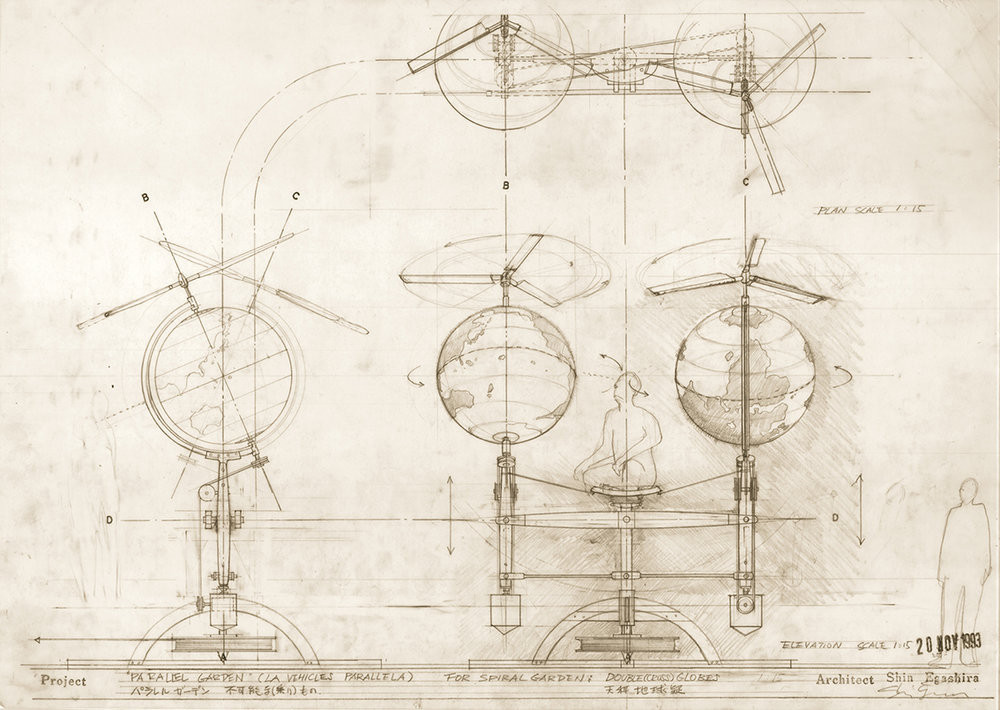Shin Egashira: Beautifully Incomplete
Betts Project is pleased to present Beautifully Incomplete, the first exhibition with the gallery by London based Japanese architect and artist Shin Egashira.
The exhibition showcases a series of objects and drawings that altogether point to the power, prevalence and activity of non-human entities within the places we inhabit. Through a careful selection of new and unseen old works made between 1988-2019, Beautifully Incomplete allures audiences into the unusual mind of Shin Egashira and ventures into a realm of the absurd, and seeks to reveal his attempt to consider a new possibility of living amongst the things that surround us.
In 1988 Egashira obsessively began selecting and stockpiling various scrap parts from the streets of London. Successions of routine walks and rides on his Suzuki GT from skip to skip, car breakers to scrap yards, building sites, electrical junkyards, and a joiner’s rejects yard were made over the course of ve years. Items included parts to window frames, doors, cornices, record players, record vinyls, gears, springs, radio speakers, a walkman, railway sleepers, motors and hinges, oorboards, steel angles, cast iron pipes, ceramic tubes, glass and London bricks.
For Egashira these items each behold a story and represent a post-punk era London that was as societally and consciously fragmented as its residing objects, spaces and buildings. It was an era when popular culture was being continuously re-identified and recycled through the fusion of diminished sounds, aesthetics, colours or technologies; everything felt like it existed in a state of incompleteness, striving for the necessary or appropriate parts to be fulfilled.
The graphite drawings in the exhibition depict these various scrap parts and their synthesis into new models and machines. Each drawing belongs to one of three previous installation projects conceived by Egashira: Objects Viewed from the Erased City (Camden Art Centre, London, 1991; AA Gallery, London, 1992), Parallel Garden (Spiral/Wacoal Art Centre, Tokyo, 1993) and Beauty of Our Pain (Bennington College, US, 1995; Art Front Gallery, Tokyo, 1996). The “Beauty of Our Pain” (1993) series, which also manifests as a new model on display entitled “Untitled as Box” (2019), illustrates a contraption inspired by the diverse design of pre-industrial torturing devices combined with post-industrial bodybuilding equipment. The drawing “Parallel Garden: Double (Cross) Globes” represents Egashira’s interpretation of a time travelling machine instructed in Alfred Jarry’s text Practical Construction of the Time Machine (1899), and presents itself in physical form in “Double-Globe” (2019) in the centre of the gallery space. Other machines of Egashira comment on how domesticated entities in our lives often remain entirely separate yet determinant agents upon our behaviour and sense of place in the world. For instance “Cat Machine” (1991) is a small animal-like machine which would hop up and down in the space, and references how cats often sit and seemingly moderate our social behaviour differently to ourselves. Similarly the model “Fish Cabinet” (1993), the first of a large series, represents the form and movements of domesticated fish which also preserves and records the memory, history and identity of elements of the erased city. Altogether these drawings and constructions are neither proposals for buildings nor mere forms of entertainment. Instead these works symbolise rooms, houses and inhabited sites reduced to their essence, and, in the mind of Egashira, ultimately contain the soul and spirit of architecture.
Shin Egashira (Tokyo, 1963) is an artist, architect and educator that worked in Tokyo, Beijing and New York before coming to London where he established since 1987. His recent experiments include the construction of Alfred Jarry’s "Time Machine" alongside astro-physicist Andrew Jaffe, “How to Walk a Flat Elephant” and “Twisting Concrete”, which fuses old and new technologies. Shin Egashira conducts a series of landscape workshops in rural and inner city communities across the world including Koshirakura (Japan), Muxagata (Portugal), Shanghai, Brooklyn and Tokyo. He has been teaching at the Architectural Association since 1990 and is the Unit Master of Diploma Unit 11. With the theme of “Urban Interior” the unit has been closely observing London’s inner peripheries in opposition to the recursive forms of urban gentrification and erasure. His works have been exhibited internationally. He has been artist in residency at the Camden Arts Centre in London and Bennington College in Vermont.
